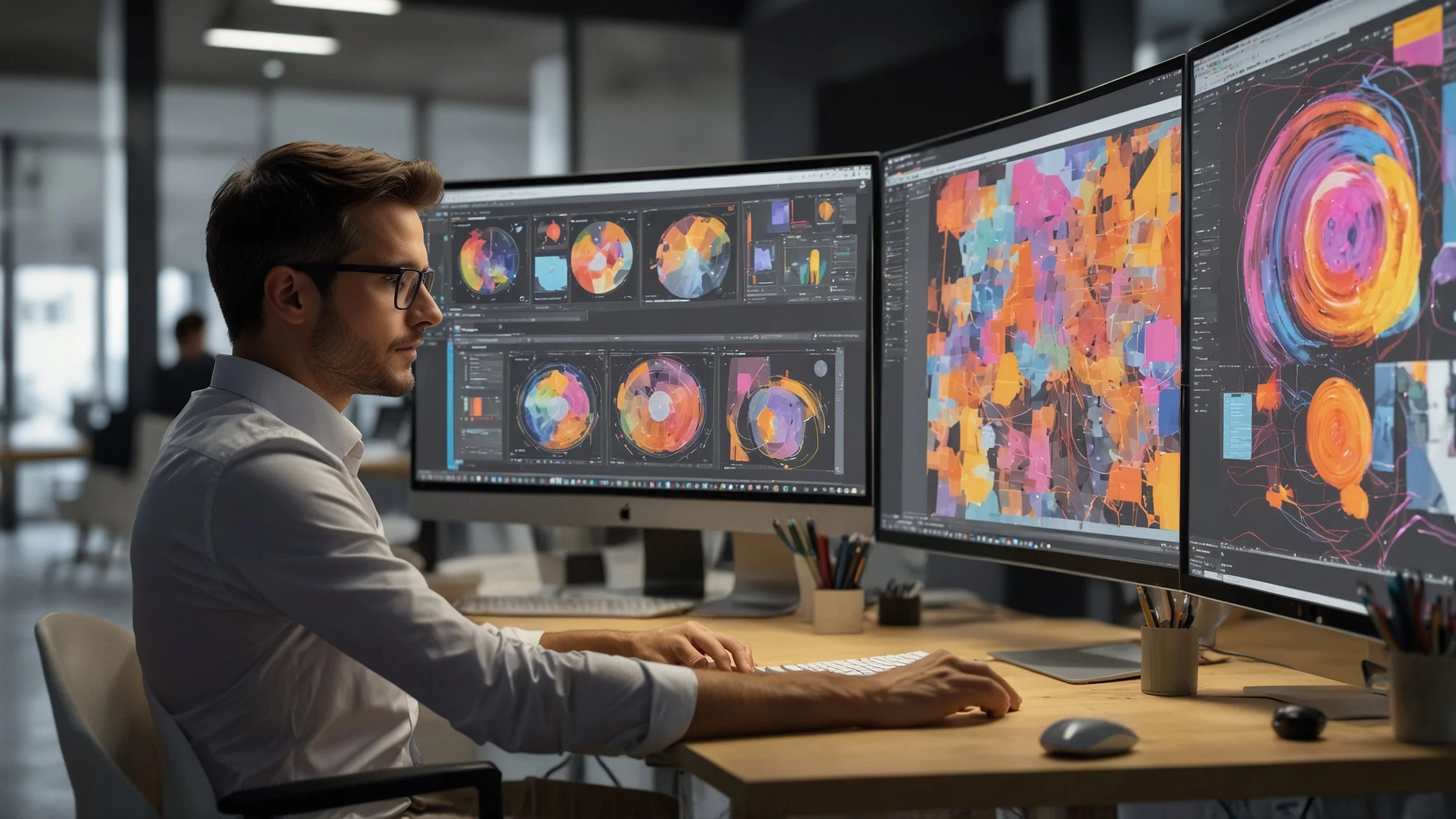The Artificial Intelligence Revolution in the Creative Field
The automation of creative tasks through artificial intelligence (AI) is significantly revolutionizing the workplace. This phenomenon, beyond being a mere technological trend, is part of a logical strategy focused on increasing operational efficiency and profitability. We will investigate how and why Artificial Intelligence is being incorporated into creative roles, and what this transformation entails for the future of work.
Economic Efficiency through Automation
The automation of creative tasks through artificial intelligence (AI) is significantly revolutionizing the workplace. This phenomenon, beyond being a mere technological trend, is part of a logical strategy focused on increasing operational efficiency and profitability. We will investigate how and why Artificial Intelligence is being incorporated into creative roles, and what this transformation entails for the future of work.
Technological Feasibility in Creative Automation
The automation of creative tasks through artificial intelligence (AI) is significantly revolutionizing the workplace. This phenomenon, beyond being a mere technological trend, is part of a logical strategy focused on increasing operational efficiency and profitability. Below, we'll explore how and why AI is being incorporated into creative roles, and what this transformation entails for the future of work:
Improved efficiency : AI enables automation of repetitive and tedious tasks in creative processes, freeing up time for professionals to focus on more innovative and strategic work.
Increased profitability : By optimizing time and resources, companies can reduce costs and maximize creative output, positively impacting their profits.
Developing new skills : The need to manage and co-create with AI tools is driving employees to acquire new technological and creative skills.
Potential for Personalization : AI can analyze large volumes of data to generate highly personalized creative content, improving the connection with the target audience.
Ethical and labor challenges : The advancement of AI in creative fields raises questions about the future of employment in these sectors and how the balance between technology and human talent will be managed.
Driving Innovation : With the ability to generate ideas, patterns, and designs, AI acts as a catalyst for innovation, promoting the creation of unique products and services.
Human-Machine Collaboration : The synergy between humans and AI allows for maximizing creative potential by combining the best of human capabilities with the power of advanced technology.
Redefining roles : The adoption of AI leads to a reorganization of the work environment, where creative roles are transformed to integrate technology as a creative partner.
Abundant Data as Drivers of AI Learning
The flood of data in creative areas acts as a catalyst that improves the efficiency of Artificial Intelligence .
Ease of Access : AI models can now easily access code repositories, design templates, and written content available online.
Accelerated Evolution : This constant access allows models to evolve and improve rapidly and constantly.
Learning Simplification : The continuous flow of information significantly simplifies the AI learning process.
Increased reliability : With more data to learn from, AI becomes more reliable at performing creative tasks.
Expansion of scope : The improvement in its accuracy and creativity allows for an expansion in the areas of application of AI .
Constant improvement : AI benefits from a continuous feedback stream that allows it to refine its skills.
Impact on creative industries : Sectors such as graphic design, music, and writing are seeing broader use of AI thanks to these improvements.
Boosting collaboration : Shared access to large volumes of data encourages collaboration between humans and machines.
Sustainable development : This continuous learning model supports sustainable development in creative AI applications.
As Artificial Intelligence continues to develop , the automation of creative tasks is becoming increasingly common in the workplace. Although technological progress could lead to more complex functions, the strategic implementation of Artificial Intelligence should focus not only on reducing costs but also on exploring new opportunities for productivity and innovation . The blend of economic thinking and technological know-how offers a glimpse into the future of work, in which cooperation between humans and machines will reshape the global creative landscape.






